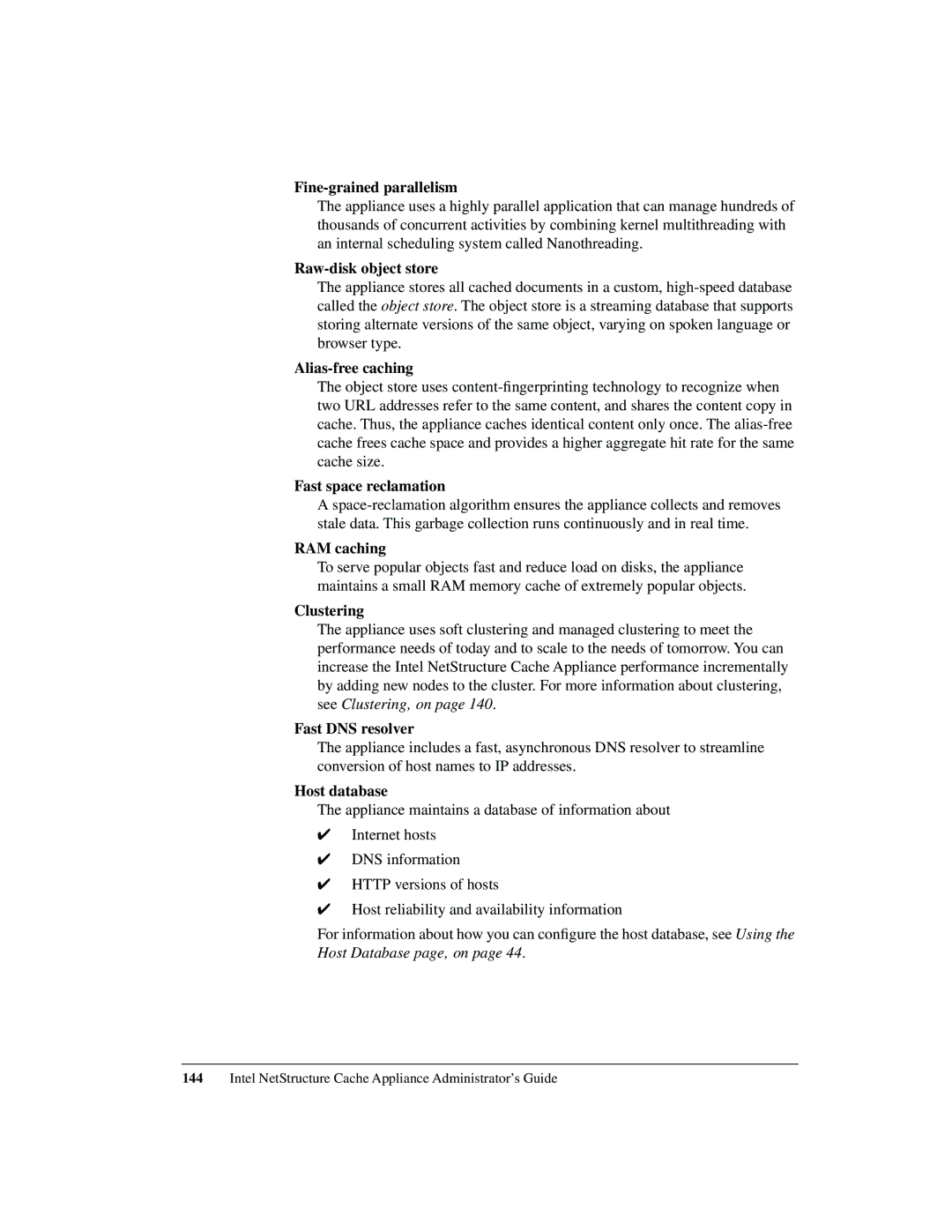Fine-grained parallelism
The appliance uses a highly parallel application that can manage hundreds of thousands of concurrent activities by combining kernel multithreading with an internal scheduling system called Nanothreading.
Raw-disk object store
The appliance stores all cached documents in a custom,
Alias-free caching
The object store uses
Fast space reclamation
A
RAM caching
To serve popular objects fast and reduce load on disks, the appliance maintains a small RAM memory cache of extremely popular objects.
Clustering
The appliance uses soft clustering and managed clustering to meet the performance needs of today and to scale to the needs of tomorrow. You can increase the Intel NetStructure Cache Appliance performance incrementally by adding new nodes to the cluster. For more information about clustering, see Clustering‚ on page 140.
Fast DNS resolver
The appliance includes a fast, asynchronous DNS resolver to streamline conversion of host names to IP addresses.
Host database
The appliance maintains a database of information about
✔Internet hosts
✔DNS information
✔HTTP versions of hosts
✔Host reliability and availability information
For information about how you can configure the host database, see Using the Host Database page‚ on page 44.
144Intel NetStructure Cache Appliance Administrator’s Guide
